Discussions of “sustainability” often center on the environment; however, sustainability goes beyond that. According to the U.S. Environmental Protection Agency, sustainability encompasses not only environmental systems, but also social and economic systems. The World Bank’s Sustainable Development Goal 8 is to “promote sustained, inclusive and sustainable economic growth, full and productive employment and decent work for all.”
A primary indicator of social and economic well-being is a community’s unemployment rate. Unemployment rates are at historically low levels: according to the U.S. Department of Labor, the October 2019 unemployment rate was just 3.6%. However, these numbers do not reflect variations in regions and population sectors, such as higher unemployment rates among veterans and persons with less than a high school diploma.
Planners can work with communities to identify solutions for sustainable economic growth and productive employment opportunities for all residents, especially those who have been left out of overall economic growth because of barriers to employment, such as childcare, transportation, or disability status. This means developing a workforce development strategy that examines the full range of educational pathways and training mechanisms to boost skills, helping employers find skilled employees, and advocating for policy changes to improve the workforce system and reduce barriers.
Key steps include:
• Building Consensus: One of the skills that is important to bring to the table is the ability to build consensus – especially when synthesizing the goals of partners from the public, private and non-profit sectors into a cohesive workforce plan. Our work has taught us the importance of meeting with community stakeholders individually to understand their individual organizations’ values and goals and using this information to inform a larger discussion about responsive program alternatives.
• Identifying a Cohesive Strategy: After identifying potential program alternatives from individual stakeholders, a consultant can help synthesize these into a coherent workforce development strategy, consolidating overlapping programs where necessary, and identifying partner roles and responsibilities. It is important connect the workforce strategy to existing plans and priorities for local and state economic development.
• Making the Case for Funding: Finally, develop a realistic program budget, identifying sources of funding already available and funding gaps that must be filled from outside sources. A consultant can assist a workforce development coalition to research and secure funding sources for Implementation. Funding for workforce development is available from a wide variety of state and federal sources. For example, in 2019 New York State made $175 million available through its Workforce Development Initiative (WDI) to support strategic workforce development efforts and improve the economic security of populations that face significant barriers to career advancement.
BRS advances workforce development programs for its clients by building strong, positive working relationships with stakeholders across sectors – government agencies, private sector employers, training providers, and non-profit partners.



